Language
- Deutsch
- English
- Español
- Français
- Italiano
- Nederlands
- Português
Currency
- AUD Australian Dollar
- CAD Canadian Dollar
- EUR Euro
- GBP Pound Sterling
- SGD Singapore Dollar
- USD US Dollar
- ZAR Rand

Ilha de Mozambique is an intriguing island off the northern shore of Mozambique, a stunning coastline of warm water, nodding palm trees, excellent seafood and a place largely undiscovered by tourists. It is Africa's version of Cuba: a tropical climate with a mix of buildings where time has virtually stood still, where an exciting collection of religions and cultures live side by side, and much natural beauty that is only now starting to emerge from decades of relative isolation.
It is a fascinating area with much to see and do, including:
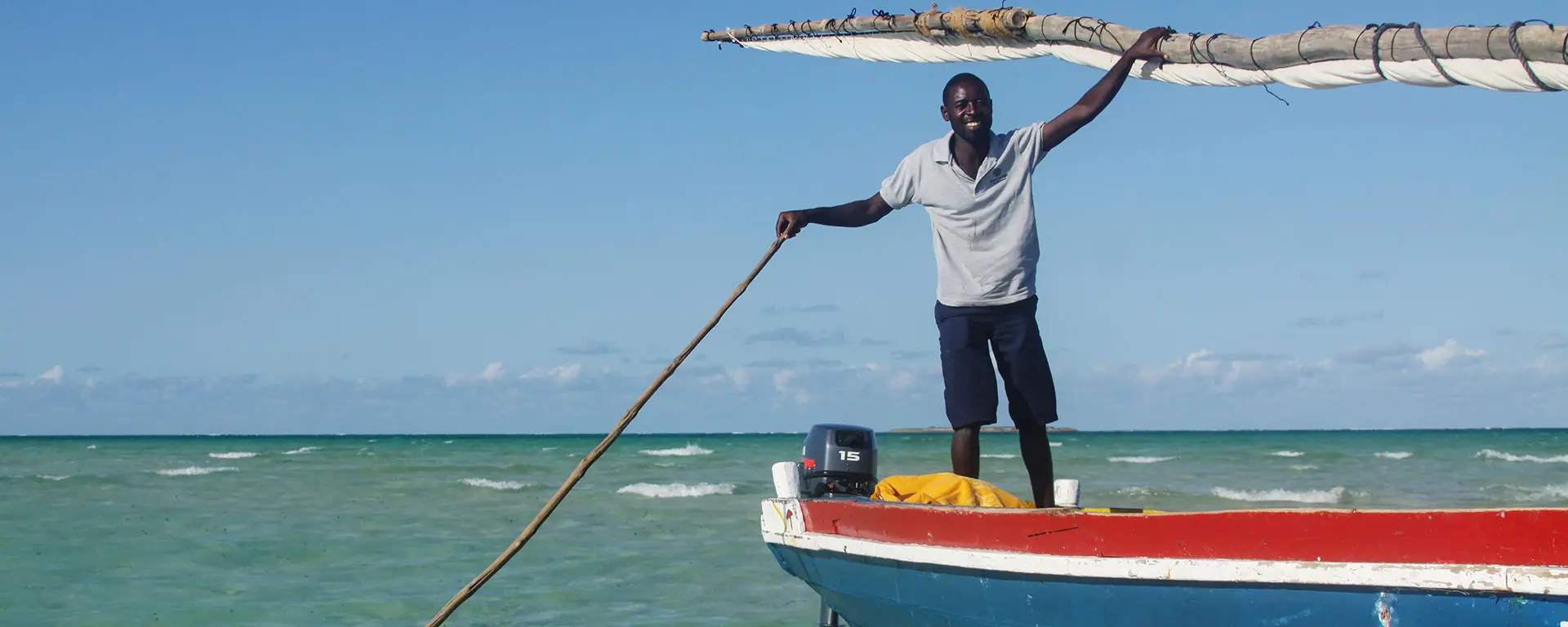
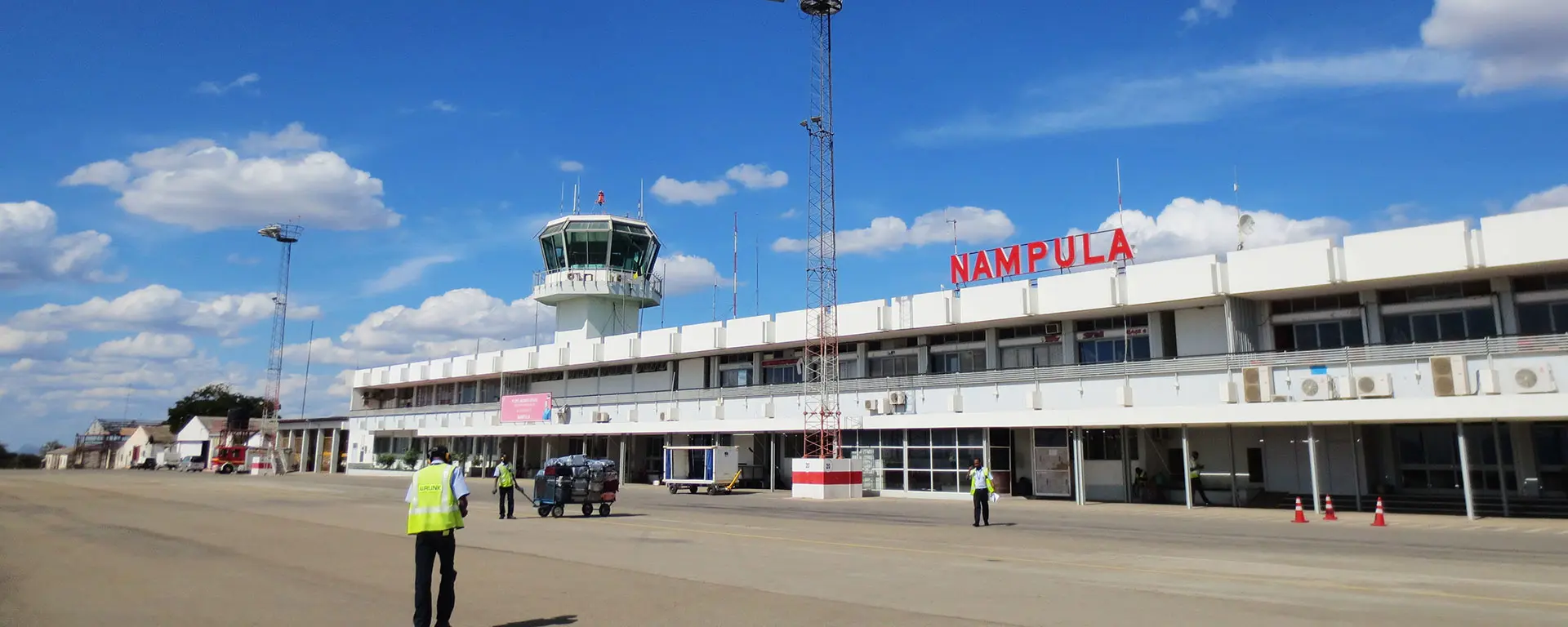
Once you get to Johannesburg in South Africa, hop on a short-haul flight to Nampula, the regional hub in northern Mozambique. Nampula International is small but typical of the now-retro airports built in Africa in the 1950s, 60s and 70s.
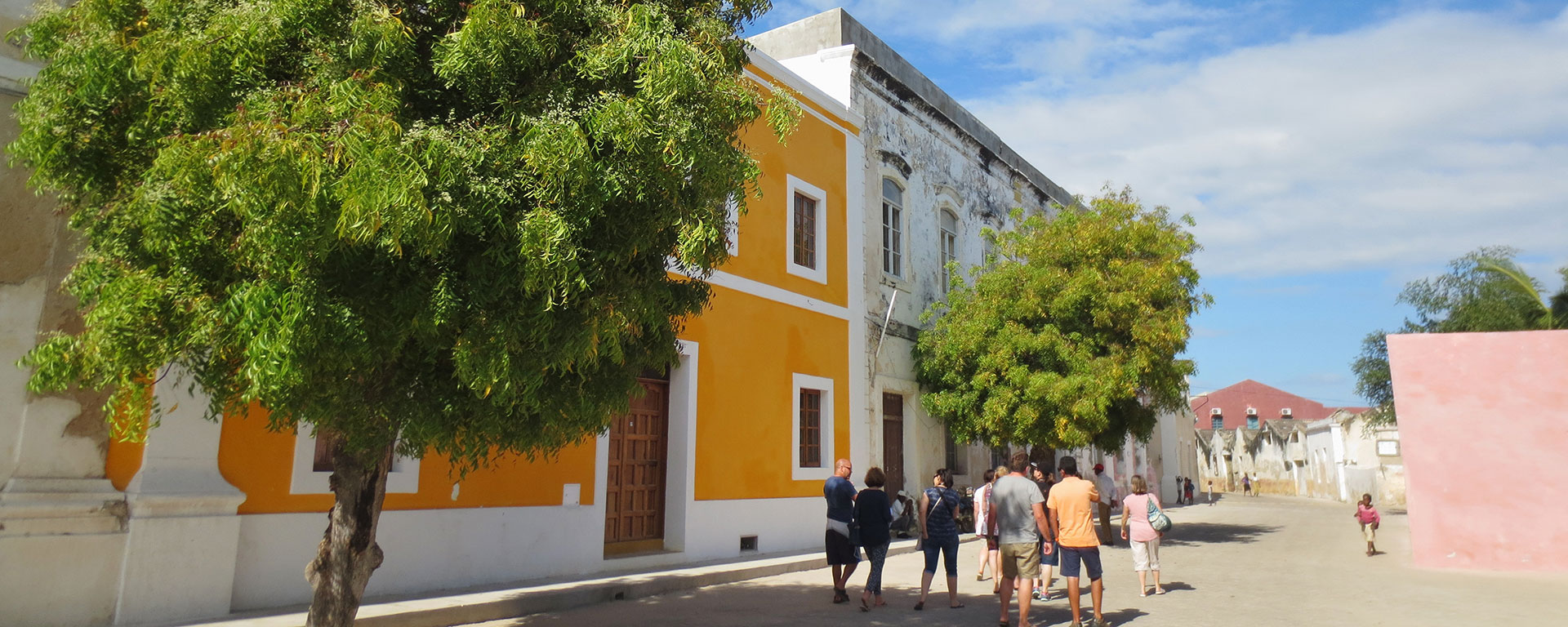
At the airport, you will be met by a driver for the 3-hour drive to Ilha de Mozambique. The roads are in good condition and you will pass many villages along the way where villagers sell roasted peanuts, traditionally harvested sea salt, barbecued chicken and fresh cashews along the side. When you are coming in to land and during the drive look out for immense and impressive inselbergs, ginormous granite outcrops amid the flat terrain.
Eventually you will get to the long bridge that connects mainland Mozambique with Ilha; built when vehicle traffic was virtually non-existent, it only has one lane but drivers courteously move aside to allow one another to pass. It reminded me of the bridges in Key West, Florida, with the same paradise at the end.
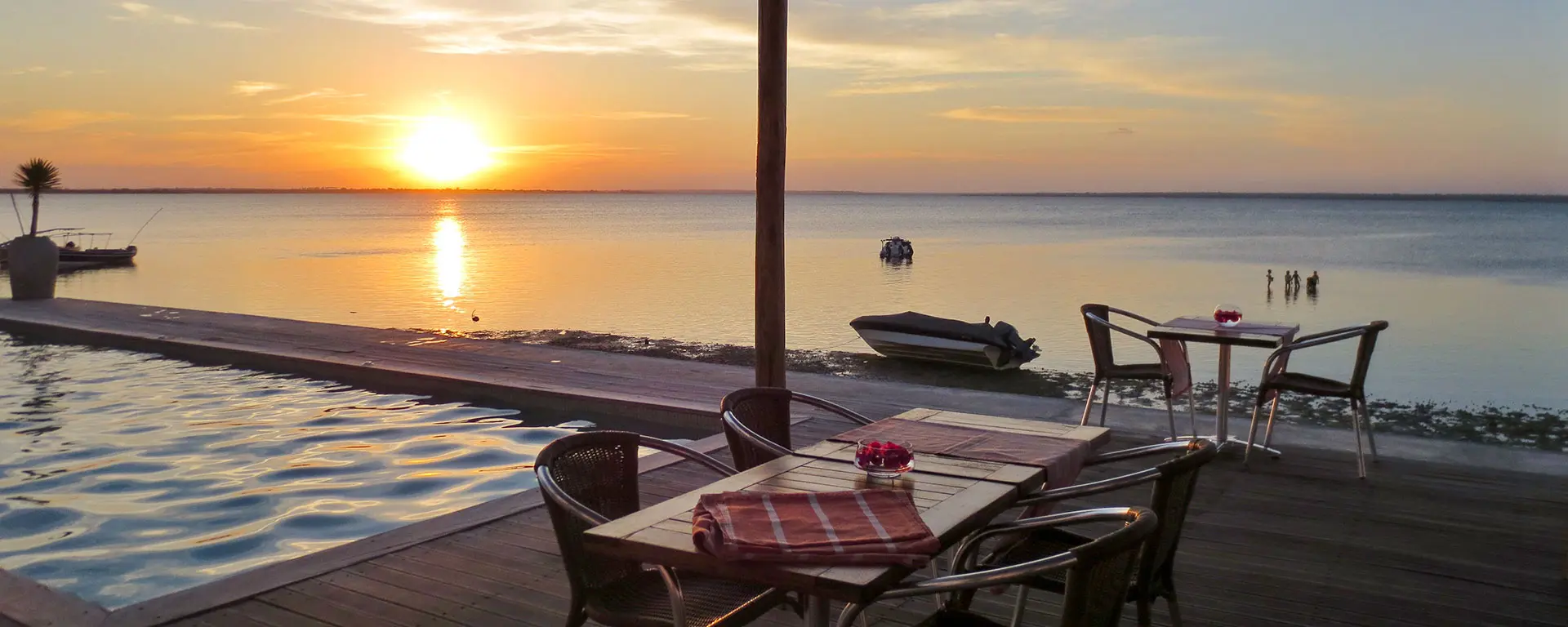
I suggest splitting up your stay between being on Ilha de Mozambique itself and a beach lodge on the mainland coast so that you get the best of both worlds.
After a flight and a long drive, it’s a pleasure to check into Villa Sands in the Old Town section of Ilha. A boutique hotel housed in what was once a colonial warehouse right on the beach, Villa Sands is probably the most unique property on the island; the furniture is a pleasingly eclectic mix of antique mirrors, mid-century classics and traditional Portuguese-colonial pieces. The atmosphere is very laidback and there is no better place to enjoy a late-afternoon sundowner than its beach bar.
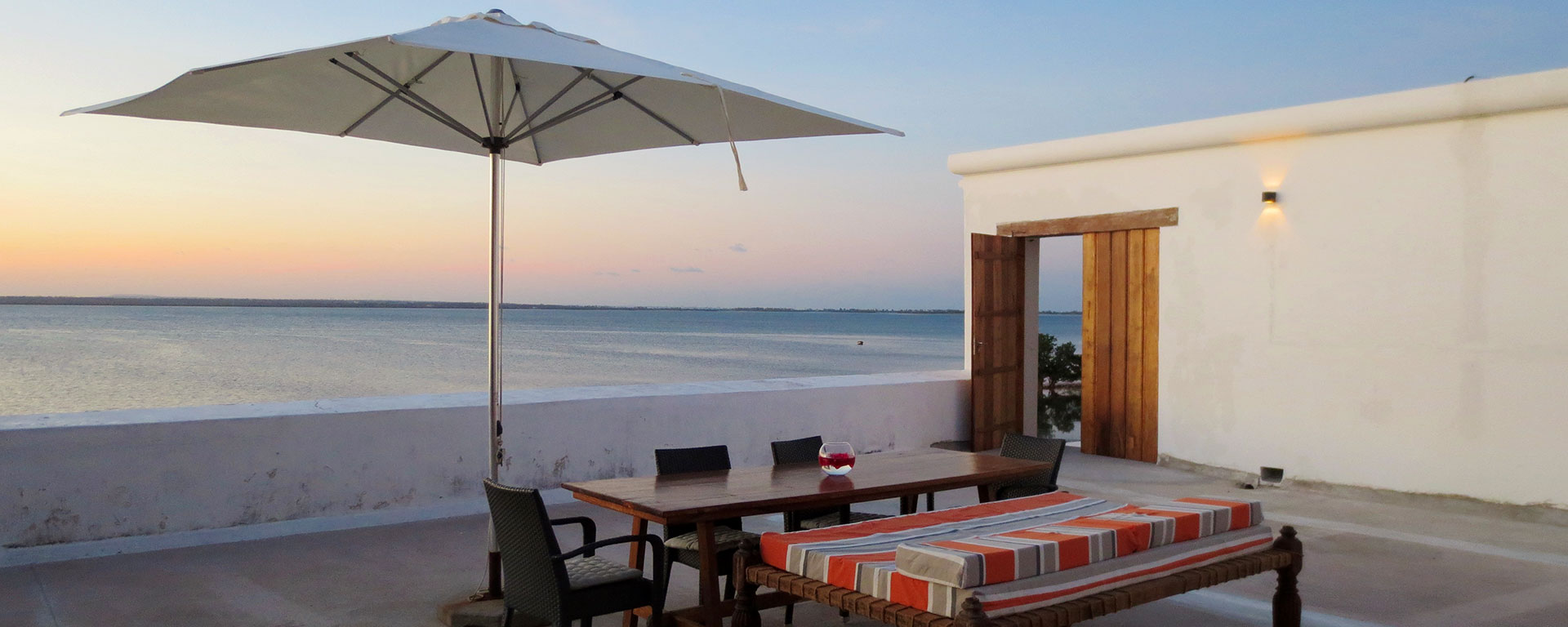
I suggest the sea-facing rooms on the roof of Villa Sands: they are the most spacious and private, and have the best views by far: you can look out over the sliver of beach and over the sparking Indian Ocean.
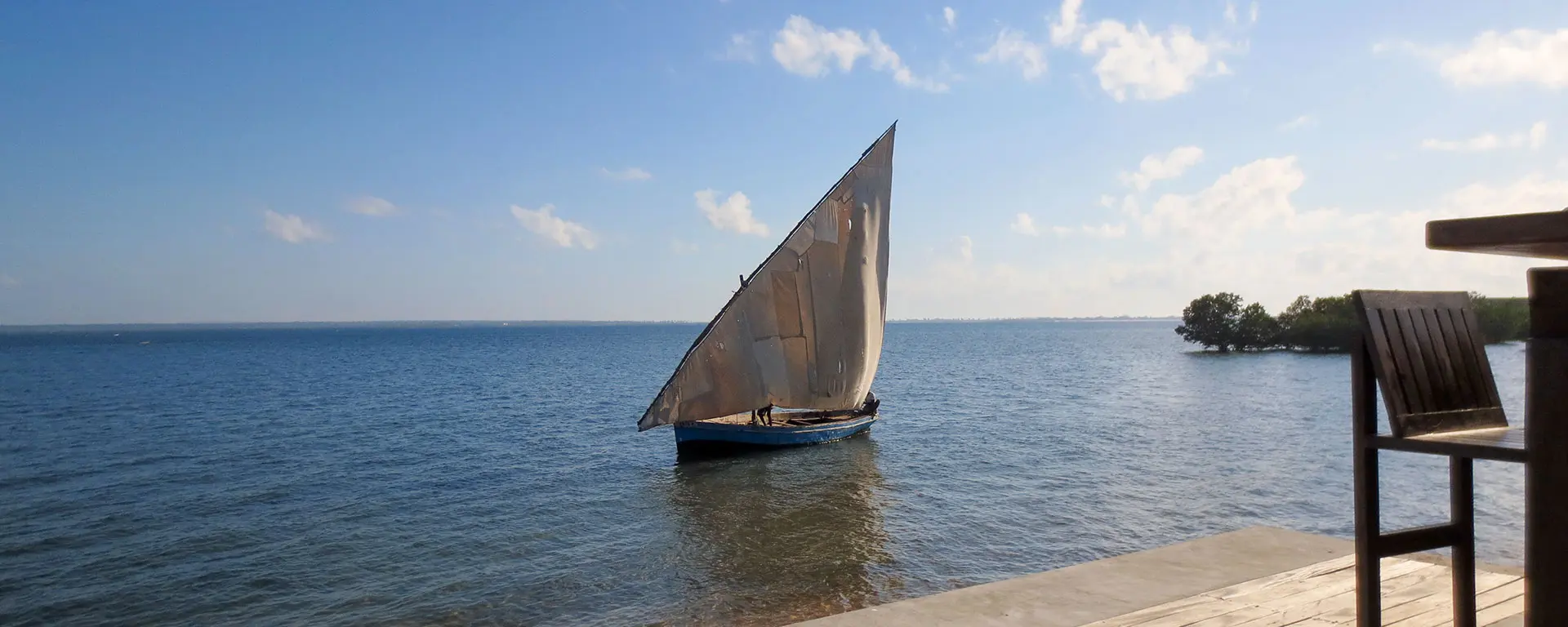
The next morning, after a your first 2M (the local beer, pronounced ‘duerj-M’) and a delicious dinner of Ilha’s fabulous fish the previous night, head down to the beach terrace for breakfast to watch the dhows going out for the day and Ilha’s dogs playing hide-and-seek on the beach. If you’re feeling energetic, try to arrange stand-up paddle boarding on the mirror-like water…
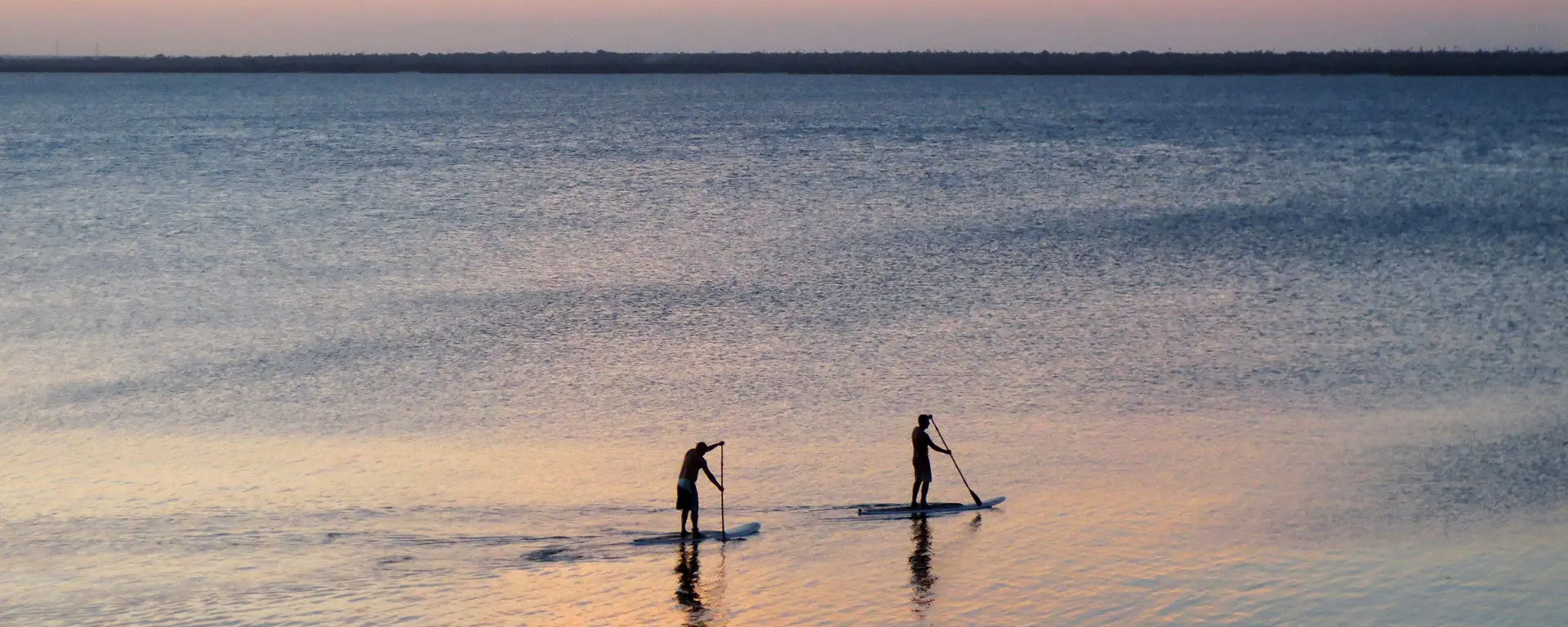
Villa Sands is a meeting spot for everyone and anyone in Ilha – locals, tourists, cruise ship passengers; lots of people pass through here, making it a great spot to catch up with what’s happening on the island.
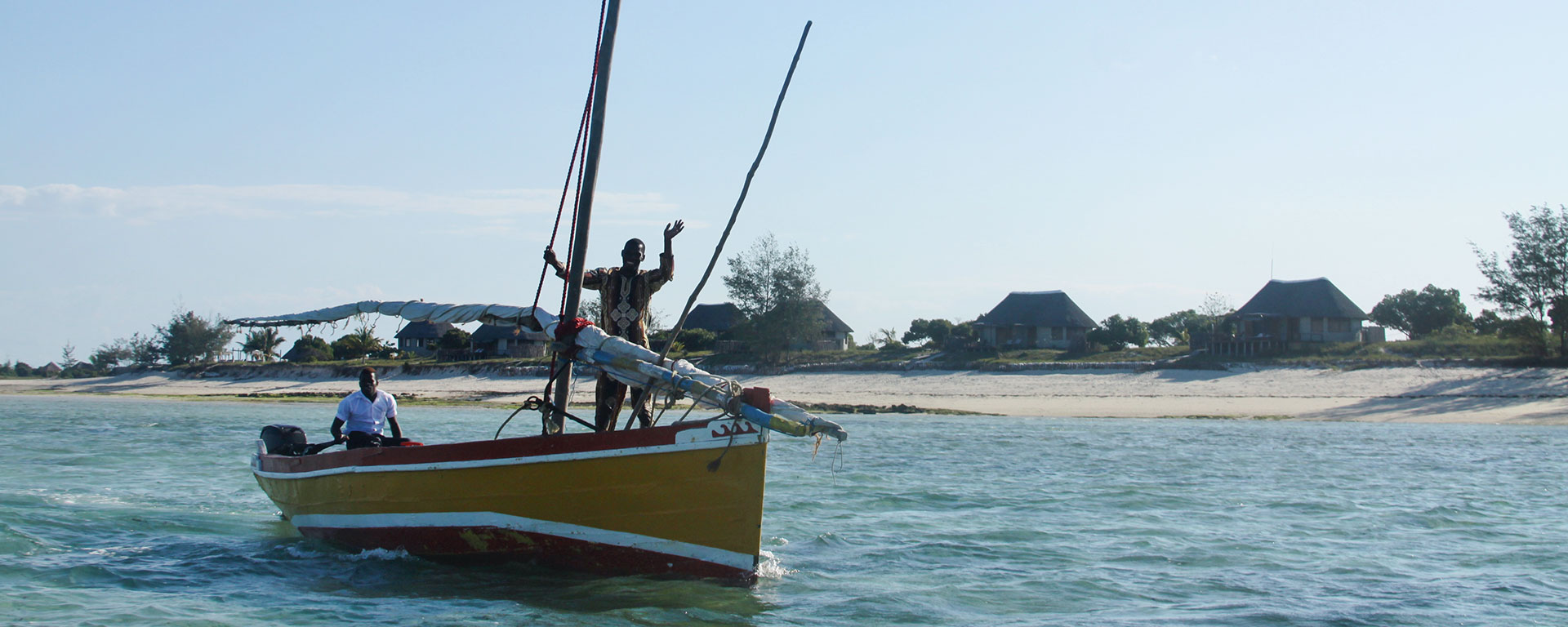
After you’ve had your fill of Villa Sands and toured the island, head back to the mainland coast via a 40-minute dhow ride to check into Coral Lodge. The large suites are strung along a stretch of sandy beach that gives way to the rocky shallows of the Indian Ocean and come into view as you arrive by traditional dhow to the waiting staff, each bearing a refreshing drink, a helping hand and among the broadest smiles you will ever see.
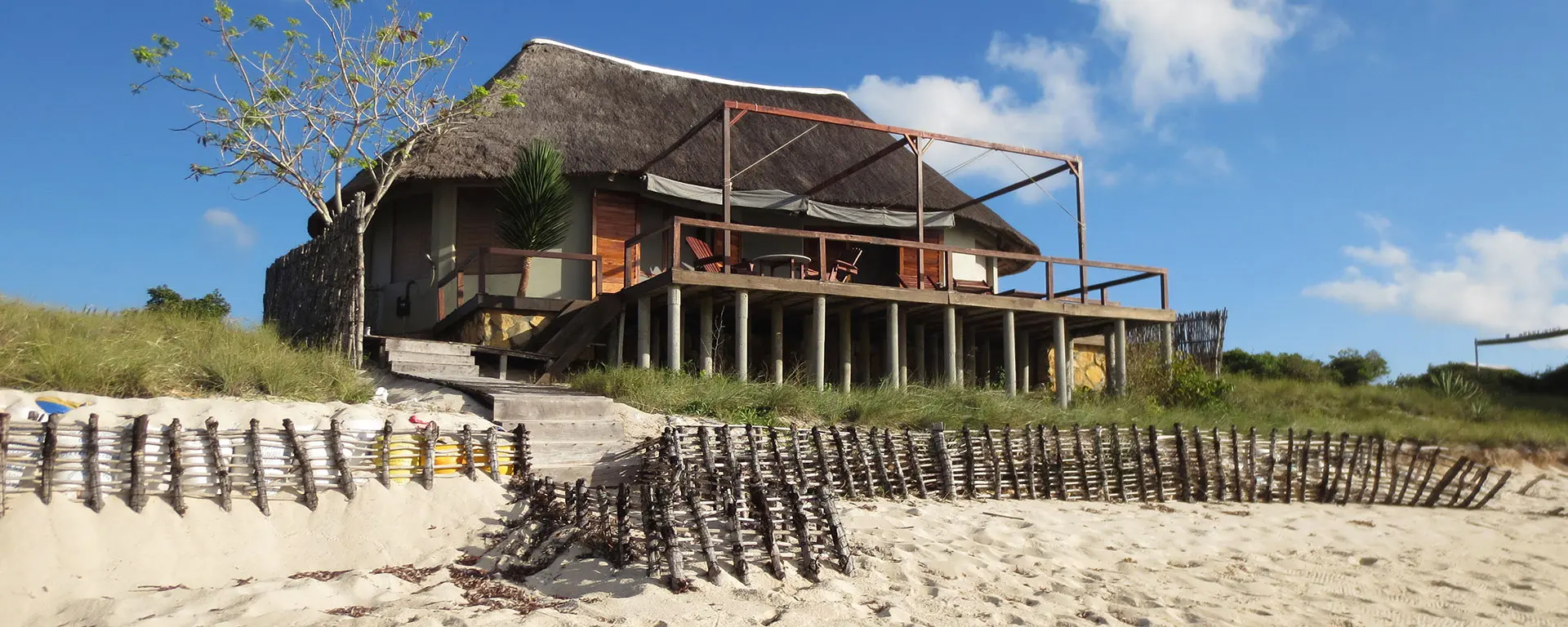
Each room at Coral Lodge looks out over the ocean or the mangroves. Ocean rooms have an almost constant cooling breeze while mangrove ones are closer to the swimming pool, bar and dining area. Wooden walkways connect all areas of this very laidback beach lodge.
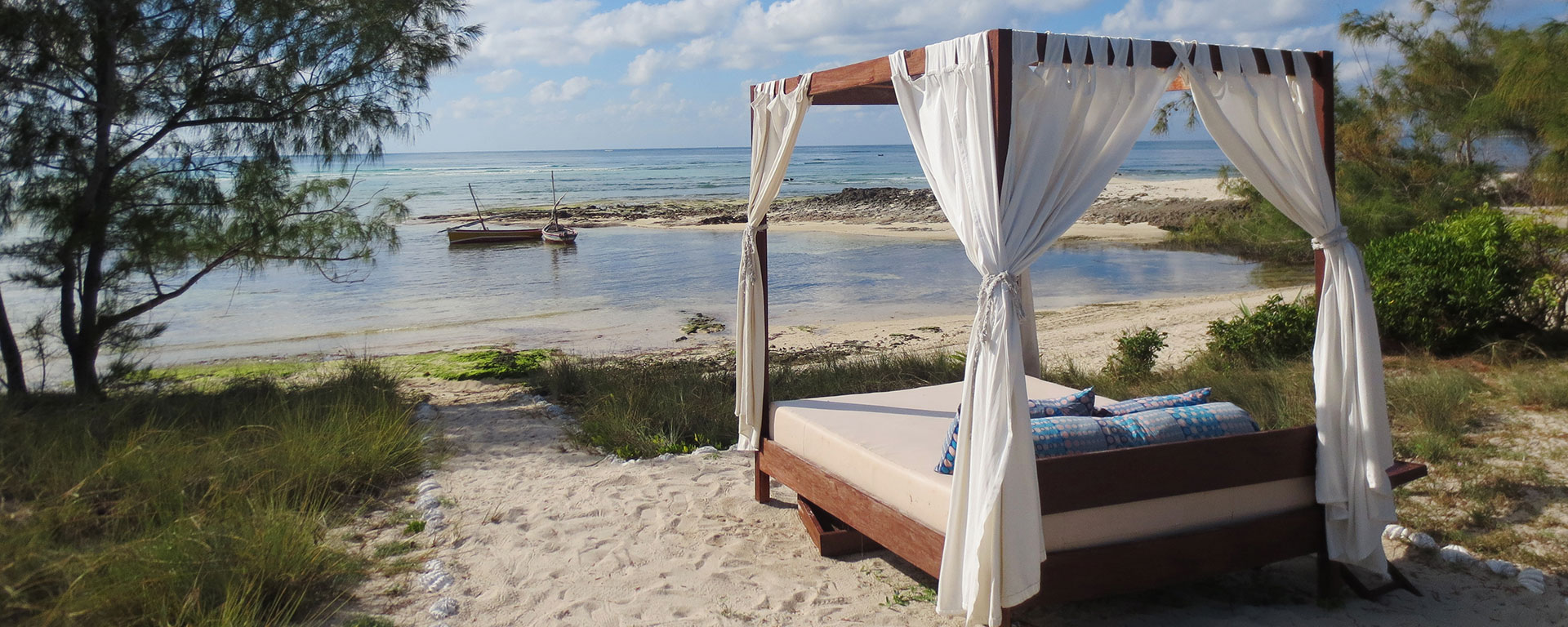
You can be as active or relaxed as you like at Coral. One of the best things to do is simply have breakfast and then flop onto an ocean-facing daybed, leaving only to take a dip in the pool. The staff will check in to make sure you always have a drink or a snack to hand.
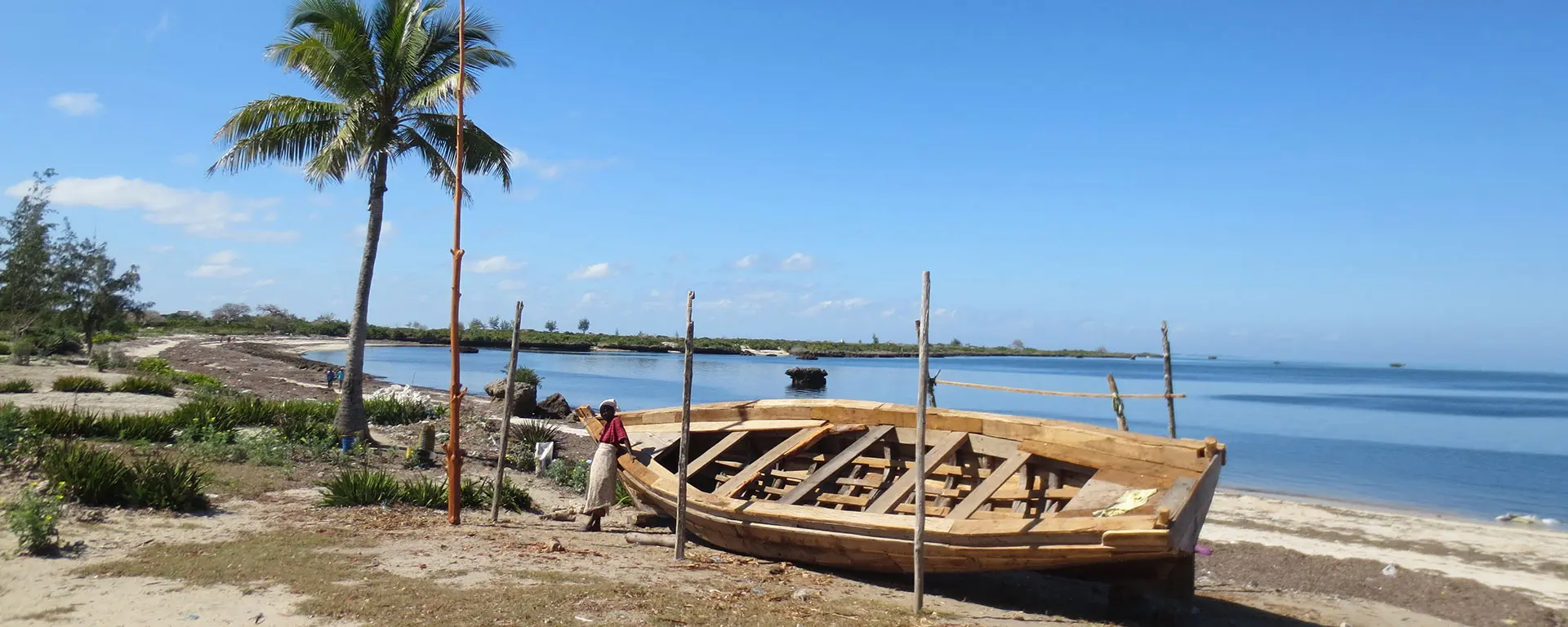
If you’re up for exploring, then there is plenty to do. Many of the staff come from the nearby village – called Bairrode Cabaceira Pequena – and are happy to show you around. Coral Lodges sponsors the school there, a great example of a community-lodge relationship that is so common and needed in Africa. The villagers still engage in plenty of time-honoured skills like making dhows by hand, drawing fresh water from the well that has served them for generations and building traditional wattle-and-daub houses. Bakers still make absolutely delicious pão de água (water bread) and roast cashews and peanuts on small fires. It’s a fascinating look at a fast-changing lifestyle.
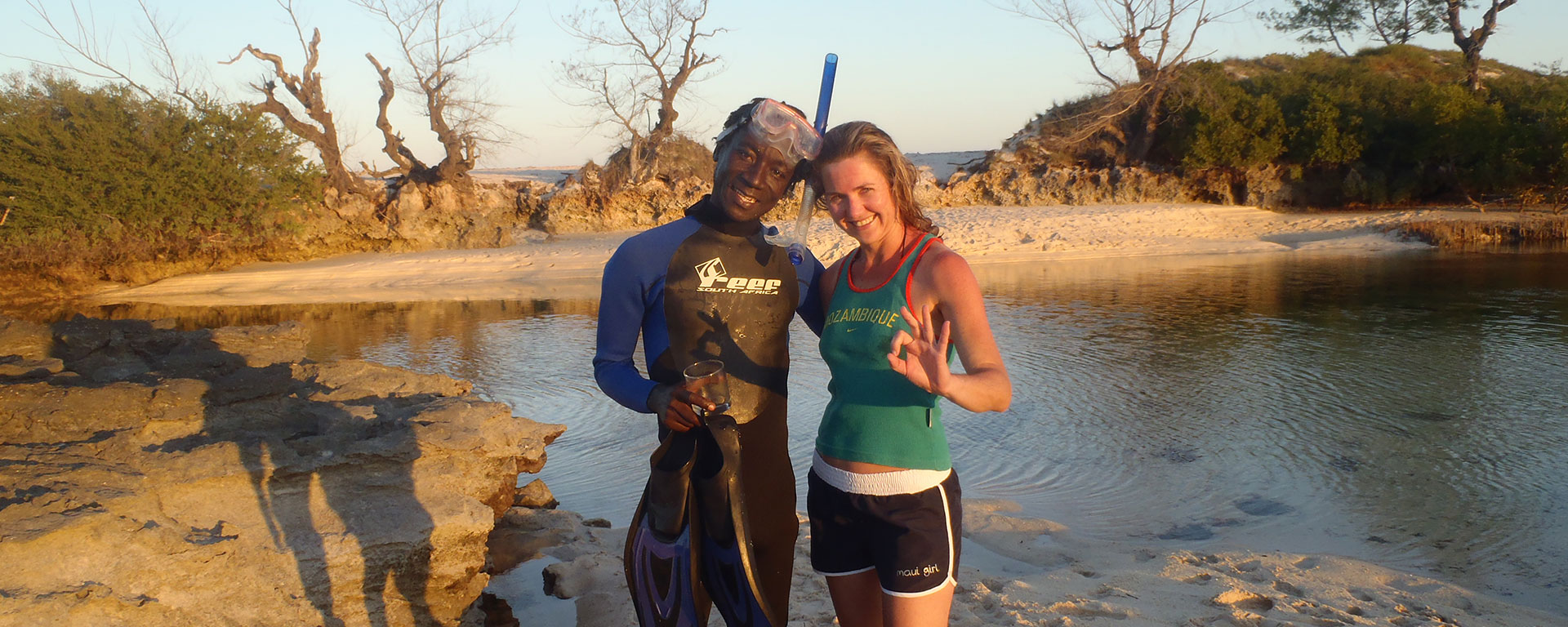
Water activities play a major role here. There are no jet-skis or speedboats to ruin the peace and quiet – even the watersports are unplugged. Take a dhow to go snorkelling and then have a picnic lunch on a nearby island that still carries the ruins of a once-glamorous mansion.
If you’re a beginner snorkeler or are teaching kids the basics, then the mangroves are an ideal place to learn. There is a surprising variety of marine life here, like crabs, clown fish, pipefish and Spanish dancers (very ‘frilly’ fish that look like they’re wearing flamenco dresses). Try to snorkel when the sun is most directly ahead – at noon, just before lunch – so that the water is flooded with light.
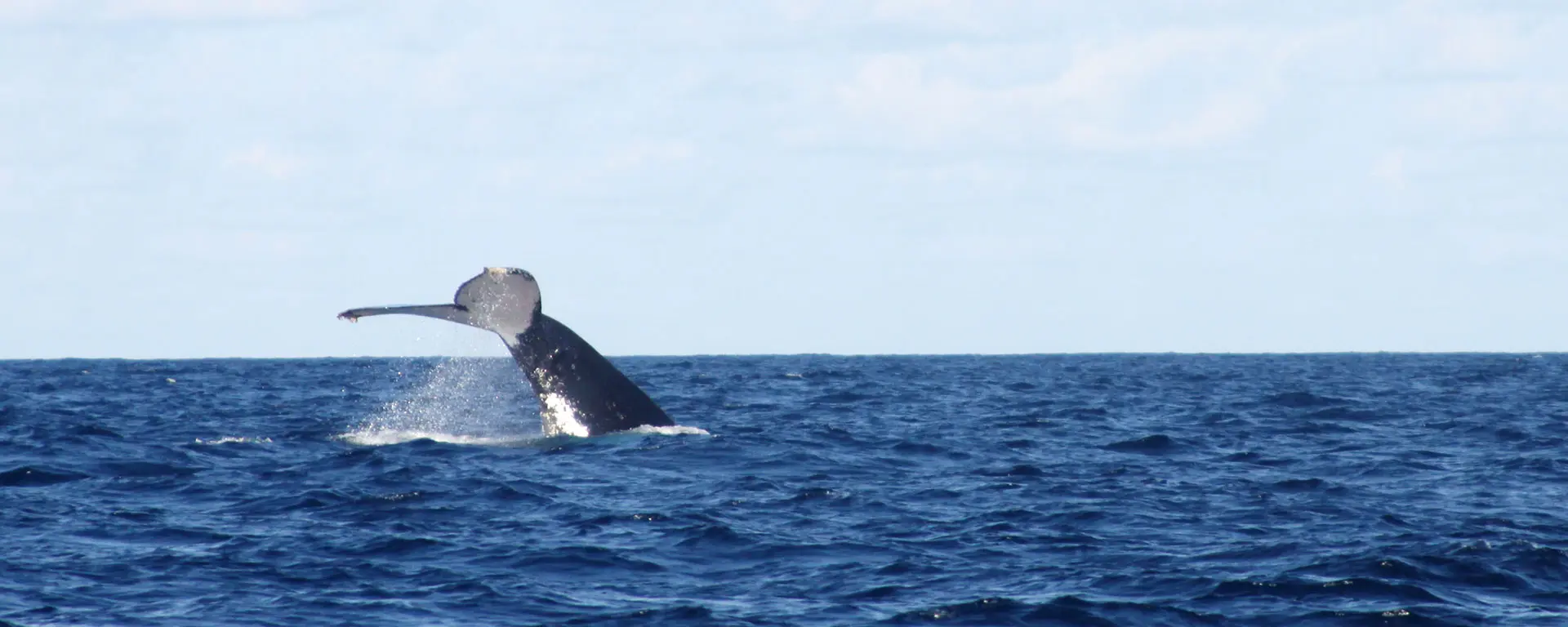
If your luck is in, you must go out whale watching on the dhow – it is such fun and very different to the more technologically advanced whale-watching in South Africa. The southern right whales make their way up the Mozambican coast to play, feed, mate and birth in the warm water, generally from about June to October.
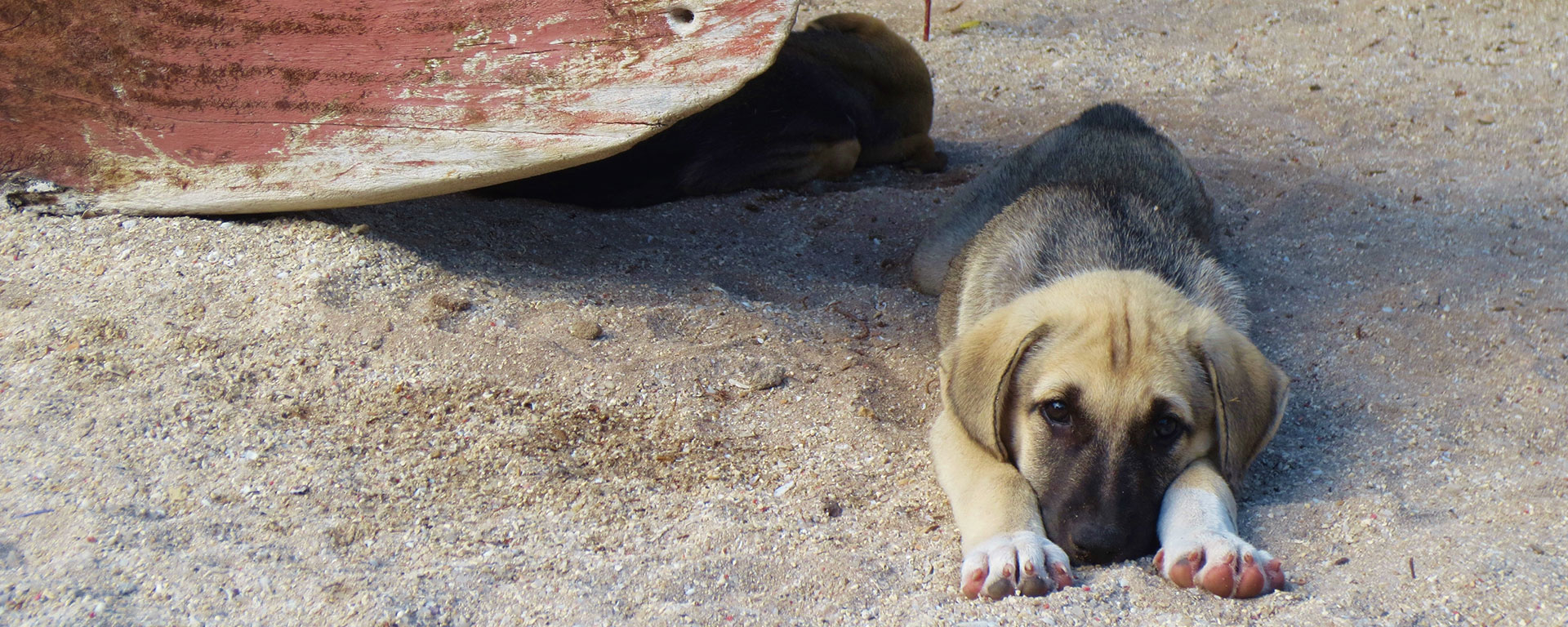
Coral Lodge is one of those ‘home from home’ places: the food is delicious and plentiful, as is the sunshine. The staff go out of their way to make sure you’re having a great time and – my favourite – you may even be lucky enough to meet the lodge dog – she’s a cutie and a complete joy if you are missing your dogs back home!
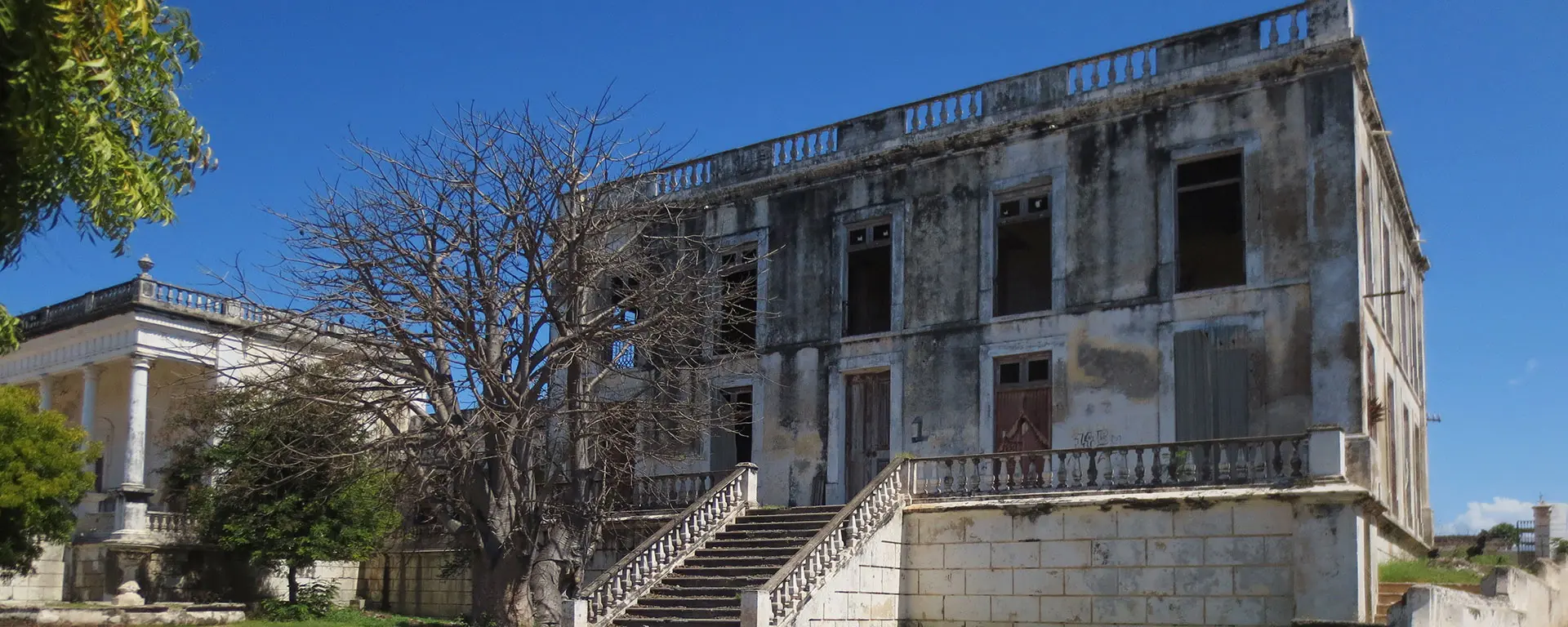
Because Coral Lodge is off the beaten track, it’s ideal if you are wanting privacy and to be away from the crowds. The rooms are immaculate (there’s even a special built-in cooling system over the bed to ensure perfect sleep) and the staff arrange all sorts of surprises and delights during your stay.
Ilha was reputedly ruled by the Sultan Ali Musa Mbiki when the Portuguese explorer Vasco da Gama passed by in 1498 (the name Mozambique is thought to be a contraction of musambiki). By 1522, the Portuguese had built the Chapel of Nossa Senhora de Baluarte, making it the oldest European-style building in the southern hemisphere.
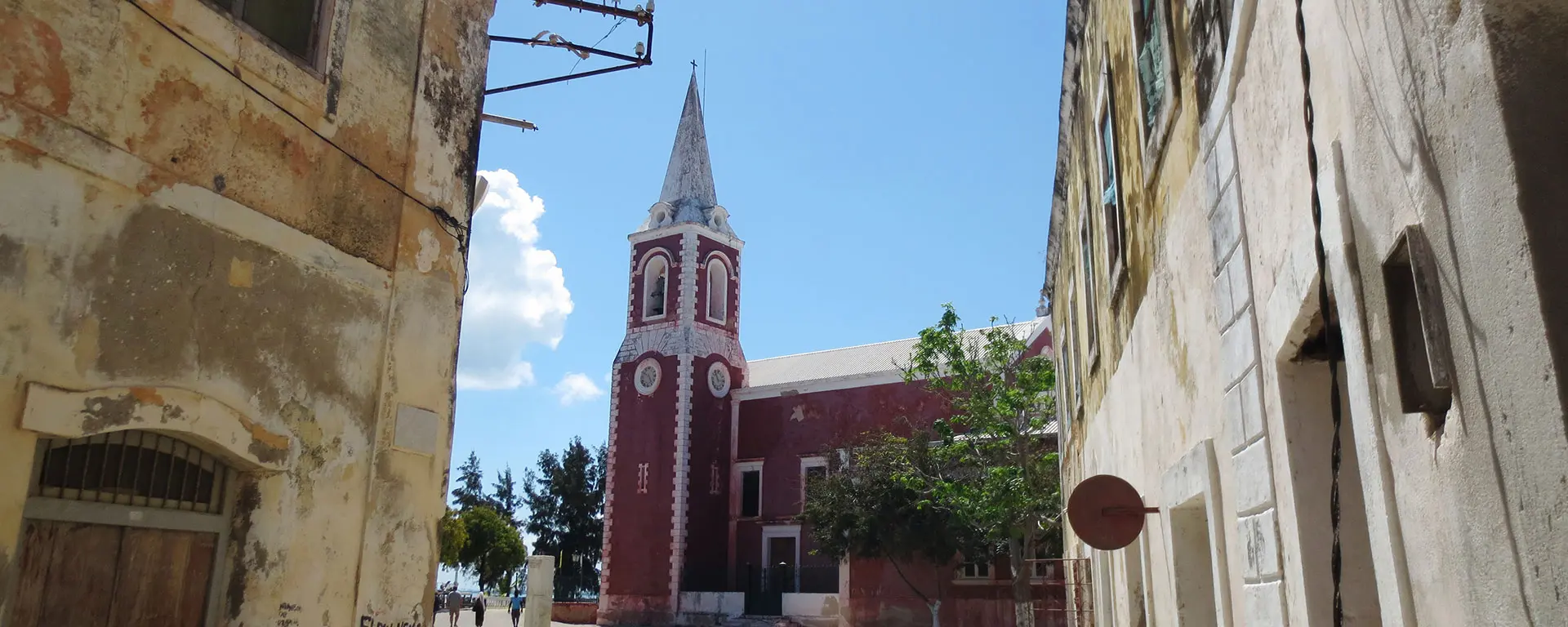
They also constructed the impressive Fort of São Sebastião (St Sebastian), which still stands today. By the 1870s, the island was so wealthy thanks to the passing shipping trade around the southern tip of Africa between the East and Europe, that the biggest hospital south of the Sahara was built on this tiny nugget of land in the ocean. It still stands today: grand, empty and full of lost stories. It, like so much of Ilha, is a photographer’s dream.
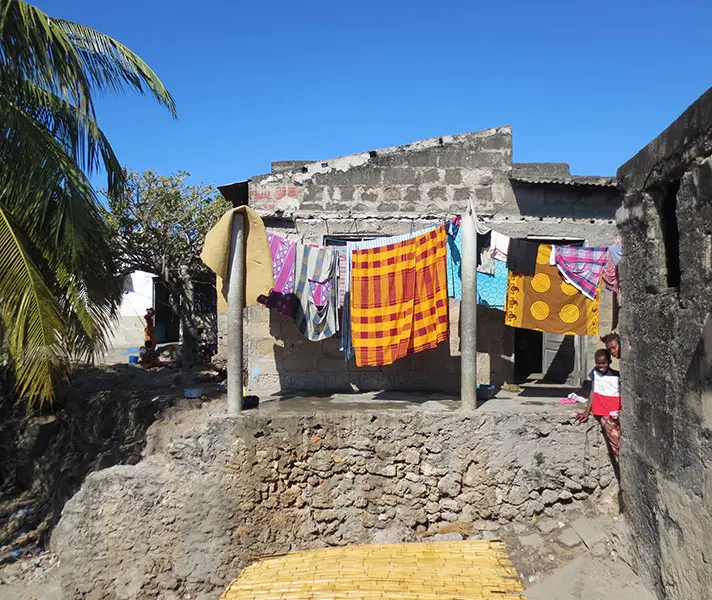
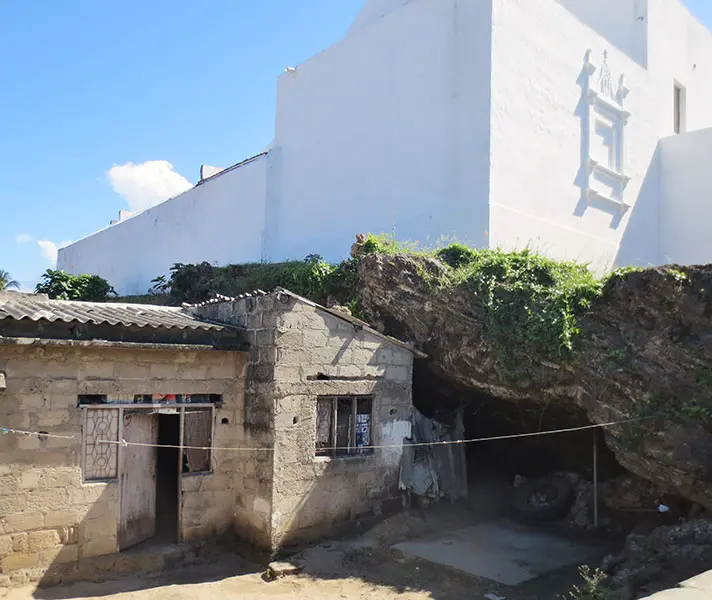
All these grand old buildings – most of which are vacant and unused – are concentrated in what’s known as Stone Town, the old, wealthy section so-called because it’s constructed of stone and coral taken from the rest of the island. In fact, much of the rest of the island (including people’s houses) is actually below sea level because of the massive amount of rock removed from it to build Stone Town. This ‘sunken’ part is known as ‘Makuti Town’ after the traditional makuti thatch used on the roofs of people’s homes.
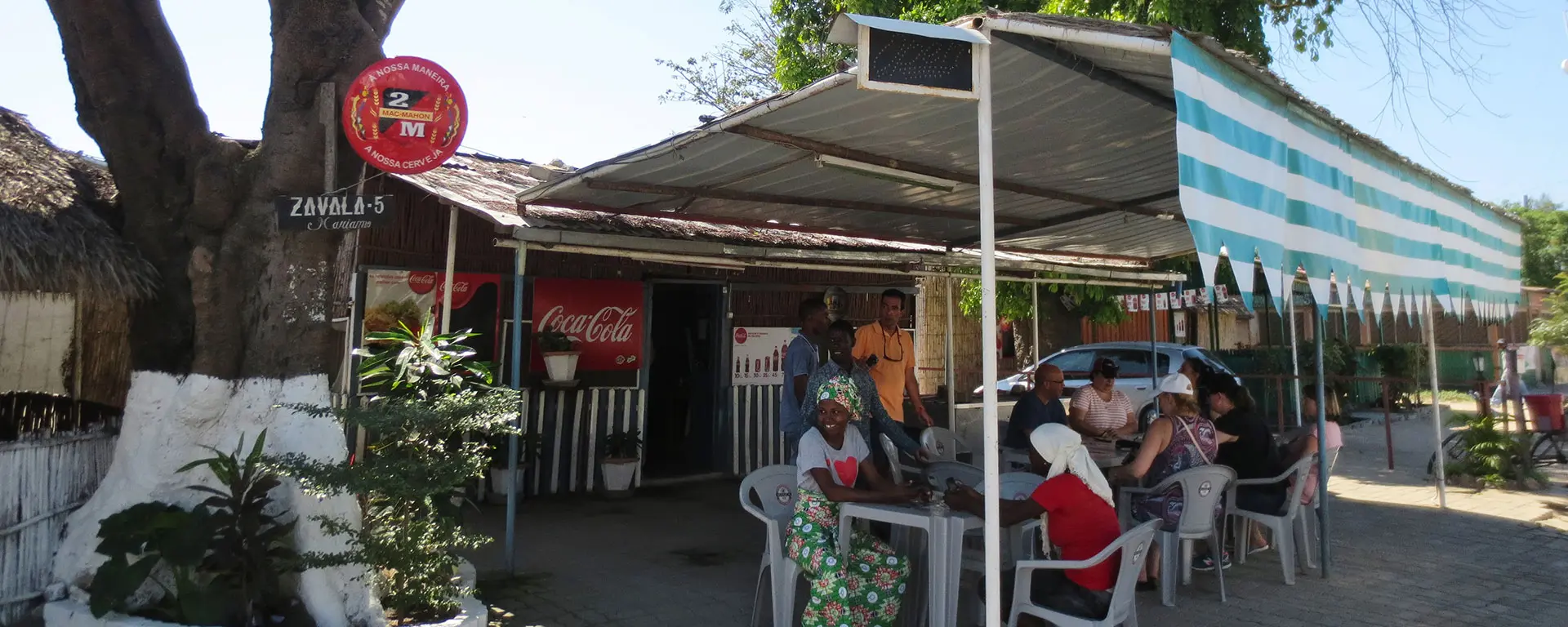
It’s best to get a local guide to take you through Makuti Town so he can give you the insight you need. This is not a place full of tourist traps – if you feel like a drink or a snack, head to a local café and tuck in (there are no MacDonald’s, Starbucks or other massive corporations here).
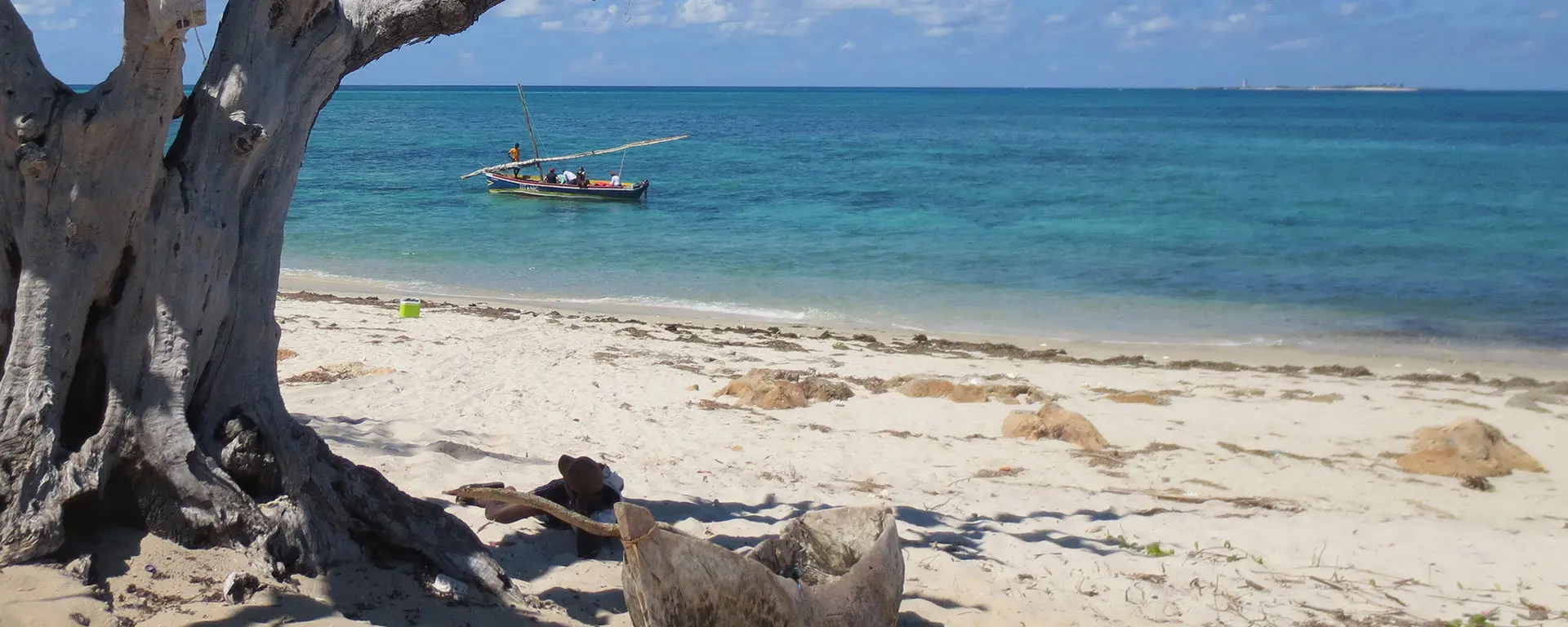
Mozambique is tropical so expect sunny days, some humidity and balmy evenings. The lack of still water and prevailing ocean breeze make this part of the coast malaria-free (although there will be bugs and all the beds have frothy gauze nets and special air-conditioning systems over them for a perfect night’s sleep).
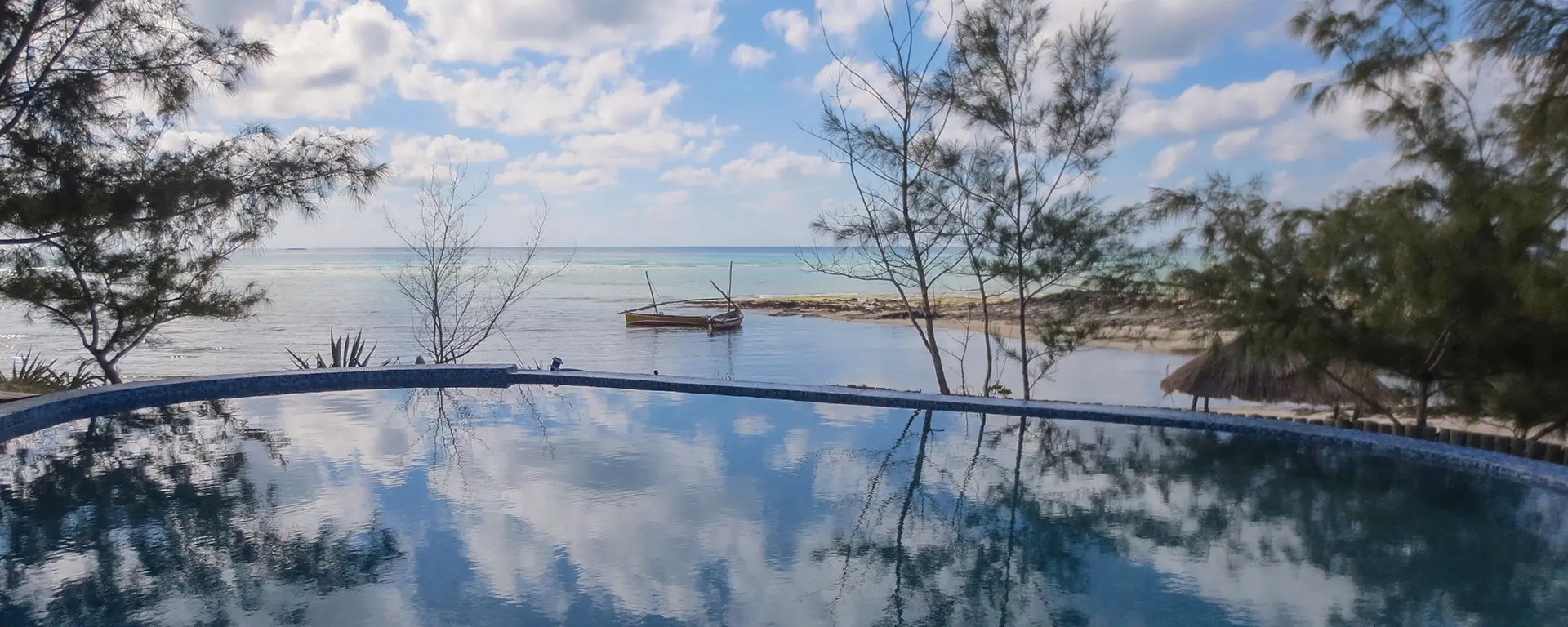
Although considered a rewarding year-round destination, there are months that are slightly ‘better’ than others.
Winter dry season: June to September
Average temperatures are 18°C – 24°C / 55°F – 75°F.
Winter is best for diving and snorkelling as there are fewer storms meaning less wind and weaker currents. The stiller the water and the fewer clouds overhead, the better visibility will be.
Whales are generally aound from about June to October.
Summer rainy season: October to May
Average temperatures are 22°C – 32°C / 72°F – 89°F.
Rain generally falls in the late afternoon as a short-lived shower, cooling everything down and allowing you to spend the morning out and about.
The best time for birding is November to February as all the migrant species are around, escaping the snowy and grey northern hemisphere, just like their human counterparts.
Windiest months: February and August
Wind does make the ocean choppier, which means visibility can be affected. The currents are also stronger when it is windy so only very strong, experienced swimmers should venture out in these conditions. If in doubt, head to the pool or mangroves instead.
The sun is hot so be sure to pack biodegradable, eco-friendly sun protection lotion, sunglasses and a hat. Most of the population is either Catholic or Muslim so dress on the conservative side of casual (cover everything from your knees to your shoulders – avoid hotpants, miniskirts or mid-riff tops) but there is no need to cover your head if you’re a woman. Regular shorts, T-shirts, sundresses and sandals are all perfectly acceptable.
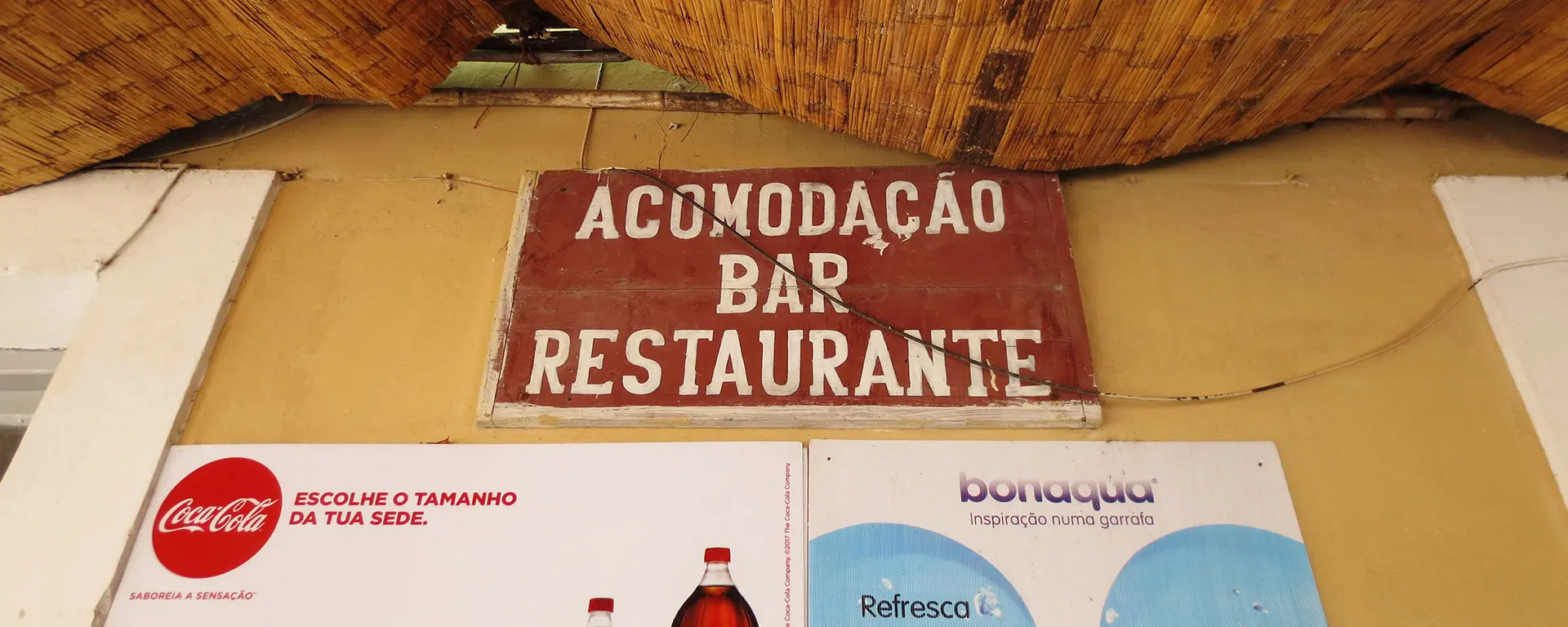
You will be spending a lot of time on boats once you get to Ilha so pack anti-motion sickness tablets that don’t make you drowsy or that interact negatively with alcohol. It’s best to chat to your travel clinic about this.
The food is great: hearty, down-to-earth, affordable and delicious! Mozambique’s cuisine has strong Portuguese influences with an ‘African-Arabian’ twist – do try piri piri chicken (spicy chicken cooked on the fire), all types of pão or bread (this not the time to embark on the Atkin’s diet), spiced rice and the local beer, known as a 2M.
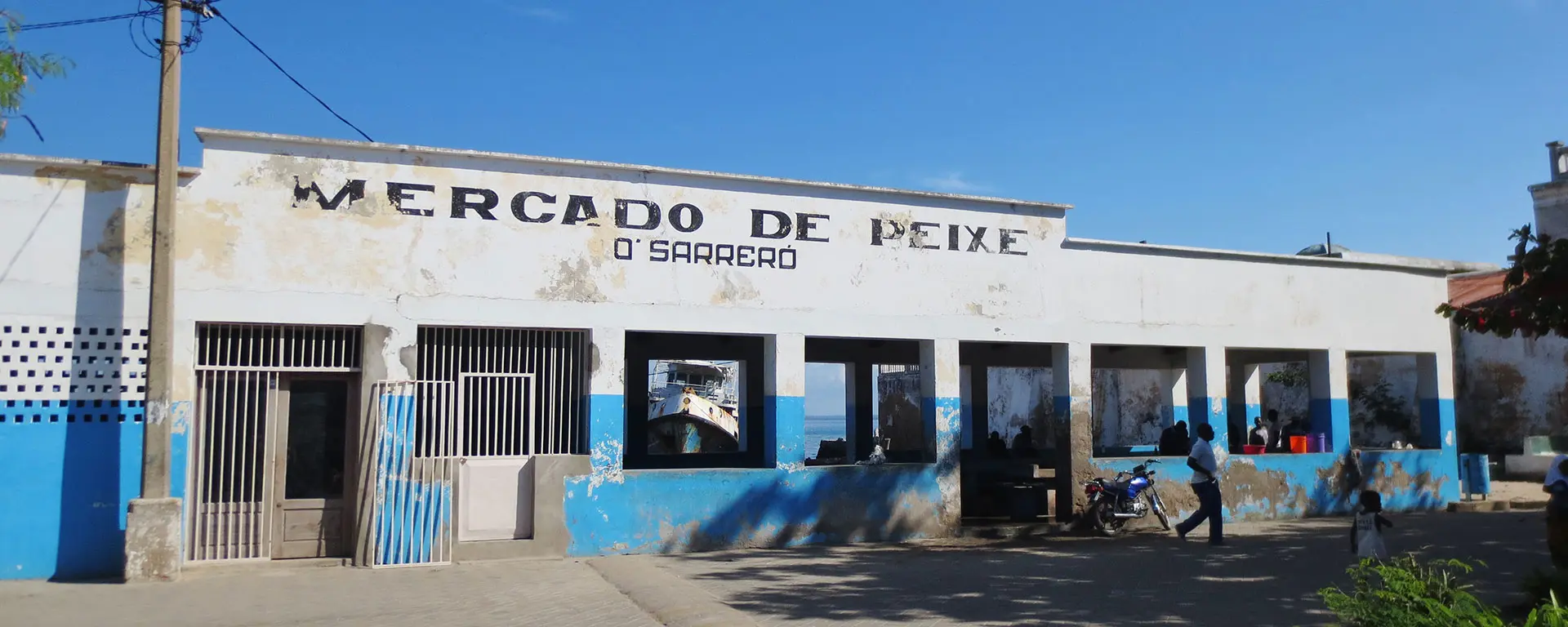
It’s the seafood that is really the stand-out here: calamari, lobsters, fish and prawns (shrimp) all thrive in the warm water and are brought in daily by the dhow fishermen. Generally grilled, there is no mucking around with complicated sauces or finicky presentations – the fish is allowed to shine through simple cooking.
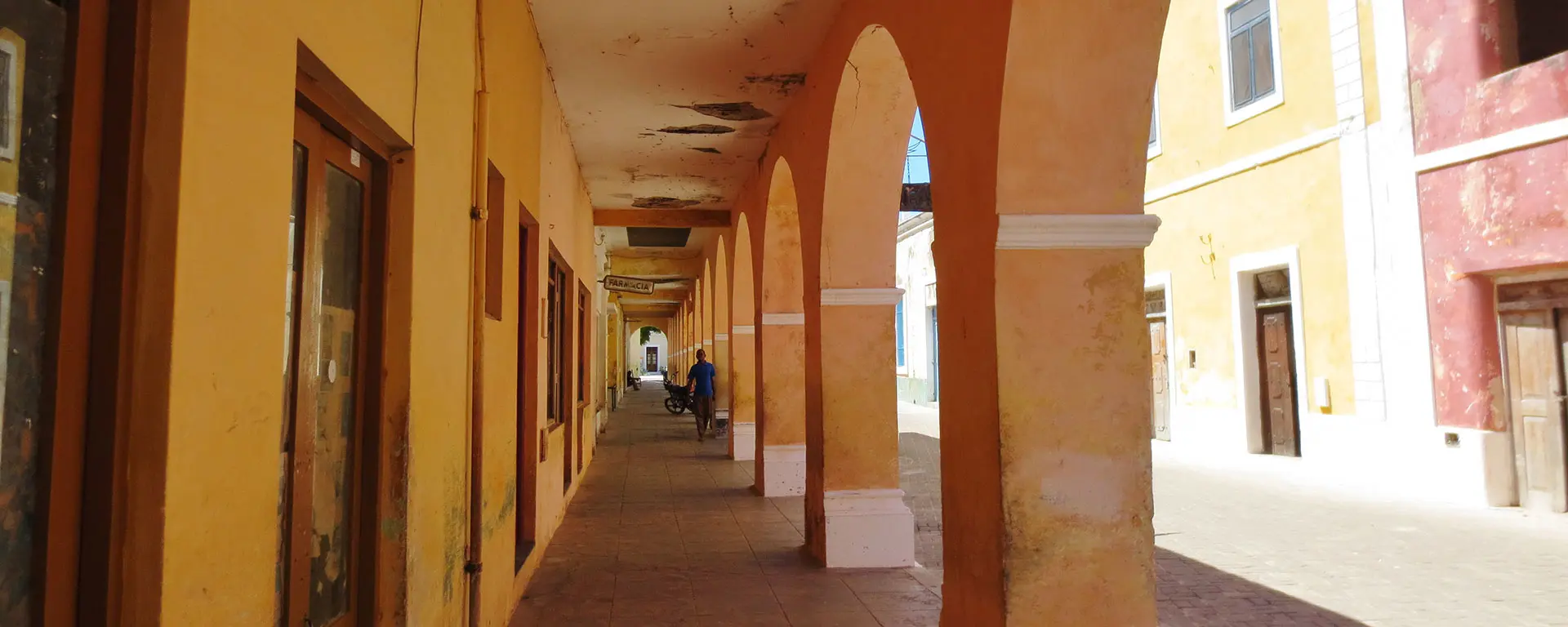
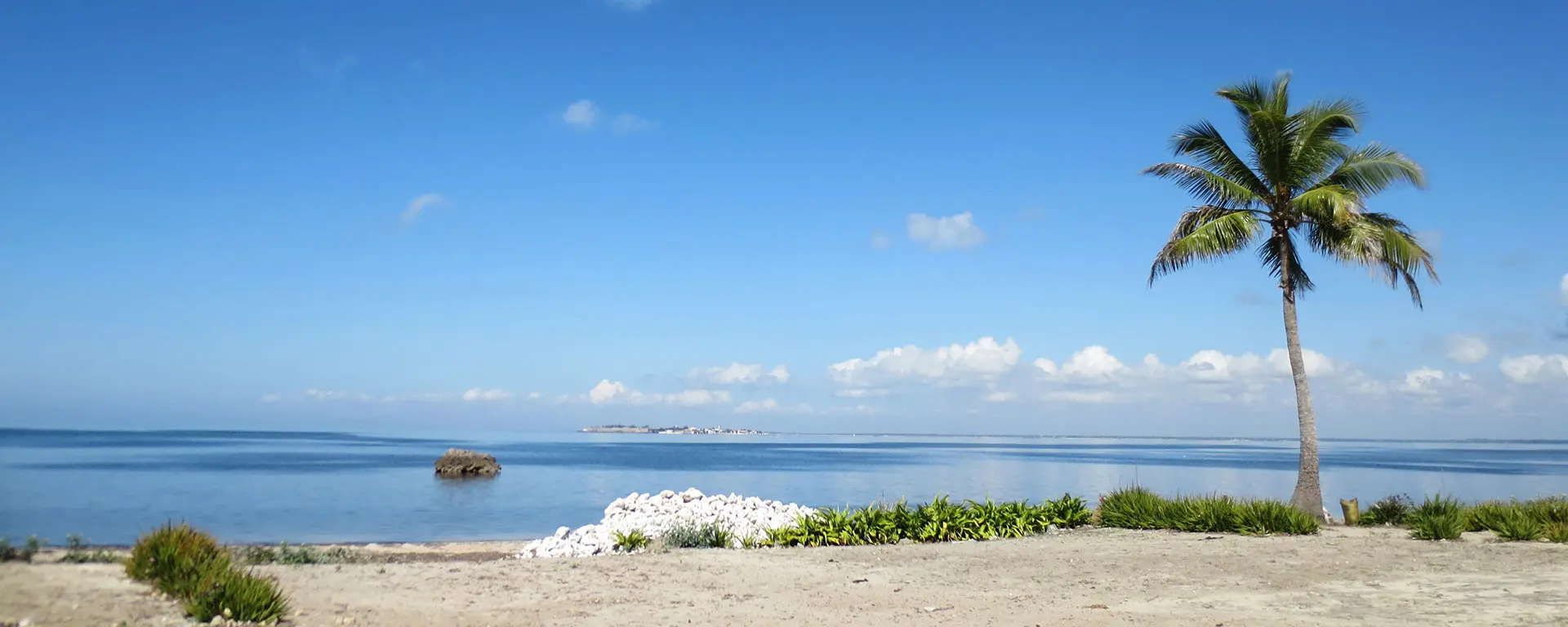
Mozambique shares a border with South Africa; indeed, you can see all the way into Mozambique from God’s Window, a famous lookout point on the Panorama Route near the Kruger National Park.
A classic itinerary, depending how much time you have, is to combine Cape Town and Kruger in South Africa with Mozambique as there are direct, short-haul flights between each.
You can also combine a Kruger-Victoria Falls holiday with a few days on the beach in Mozambique.
Other places with fairly easy logistics are Botswana: consider an Okavango Delta-Chobe safari topped off with a few days on Ilha to get an idyllic bush-and-beach combination.
For more inspiration, check out some ideas to visit Mozambique. You won’t regret it. Bom dia!
PHOTOGRAPHS BY ANGELA ASCHMANN